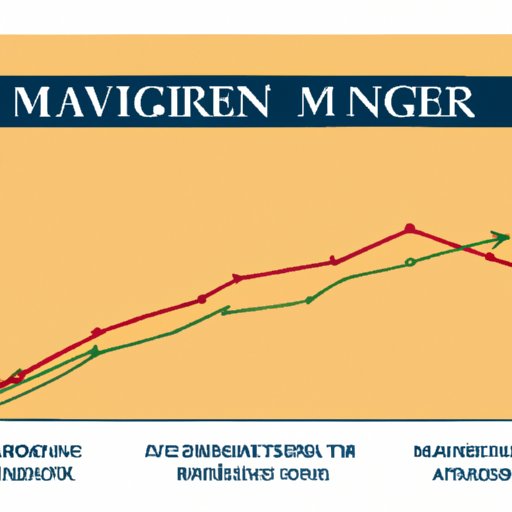Introduction
Margin investing is a type of trading that allows investors to use borrowed funds from a broker to purchase securities or other investments. This method of trading increases an investor’s potential profits, but also exposes them to greater risk. In this article, we will explore the basics of margin investing and discuss the advantages and drawbacks of leveraging your portfolio with margin investing.
Exploring Margin Investing: An Overview
In order to understand what margin investing is, it is important to have a basic understanding of how it works. Margin investing involves borrowing money from a broker to purchase securities such as stocks, bonds, mutual funds, options, and other investments. The amount of money that can be borrowed depends on the investor’s creditworthiness, the type of security being purchased, and the terms of the agreement between the investor and the broker. The investor must then repay the loan, plus interest, when the security is sold or otherwise liquidated.
There are two types of margin investing: margin buying and margin selling. Margin buying involves using borrowed funds to buy securities, while margin selling involves using borrowed funds to sell securities. Both types of margin investing can be used to increase the potential gains from an investment, as well as the potential losses.
By leveraging your portfolio with margin investing, you can potentially increase your returns. However, it is important to understand the risks associated with margin investing and to manage those risks appropriately.

The Benefits and Risks of Margin Investing
Margin investing can provide investors with the opportunity to increase their returns on investments. According to a study by the Financial Industry Regulatory Authority, margin accounts offer the potential for higher returns than non-margin accounts, “as margin investors may be able to access more capital with which to invest and benefit from larger gains when investments outperform.”
However, there are also risks associated with margin investing. Because margin investing involves borrowing money, investors are exposed to risks such as market volatility and potential losses if the security does not perform as expected. Additionally, because the investor is required to repay the loan, plus interest, any losses sustained could be greater than if the investor had not leveraged their portfolio.
How to Calculate Margin and Understand Its Implications
In order to calculate margin, investors must first determine the total value of the securities they wish to purchase. They must then subtract any fees associated with the purchase, such as commissions and taxes, to determine the net amount of the purchase. The remaining amount is the margin, which is the amount of money that must be borrowed from the broker in order to complete the purchase.
It is important to understand the implications of margin when making investments. When calculating margin, investors must consider any fees associated with the purchase, as well as the size of the loan and the interest rate charged by the broker. Additionally, investors must consider the potential risks associated with margin investing, such as volatility in the markets and potential losses if the security does not perform as expected.

Strategies for Managing Margin Investing Risk
To reduce the risk associated with margin investing, investors should develop a risk management strategy. This strategy should include diversifying investments across different asset classes, monitoring the performance of investments regularly, and utilizing stop-loss orders to limit losses if the security does not perform as expected. Additionally, investors should be aware of margin rules and regulations set forth by their broker.
Investors should also consider protecting their investments by purchasing protective puts or other hedging strategies. Protective puts allow investors to protect their investments against losses due to market volatility, while hedging strategies enable investors to offset potential losses by taking positions in other securities.

Making the Most of Margin Investing Opportunities
In order to make the most of margin investing opportunities, investors should identify profitable opportunities and maximize their returns. Investors should research the security they are considering investing in, analyze market trends, and assess their own risk tolerance to determine if the security is a good fit for their portfolio.
Once the investor has identified a potential opportunity, they should use margin investing to maximize their returns. By leveraging their portfolio with margin investing, investors can increase their potential gains if the security performs as expected. However, it is important to remember that margin investing also carries risks, and investors should manage those risks appropriately.
Conclusion
Margin investing can be a powerful tool for investors who are looking to increase their returns. By leveraging their portfolio with margin investing, investors have the potential to increase their returns on investments. However, it is important to understand the risks associated with margin investing and to manage those risks appropriately. Through proper risk management and identifying profitable opportunities, investors can make the most of margin investing opportunities.
(Note: Is this article not meeting your expectations? Do you have knowledge or insights to share? Unlock new opportunities and expand your reach by joining our authors team. Click Registration to join us and share your expertise with our readers.)
